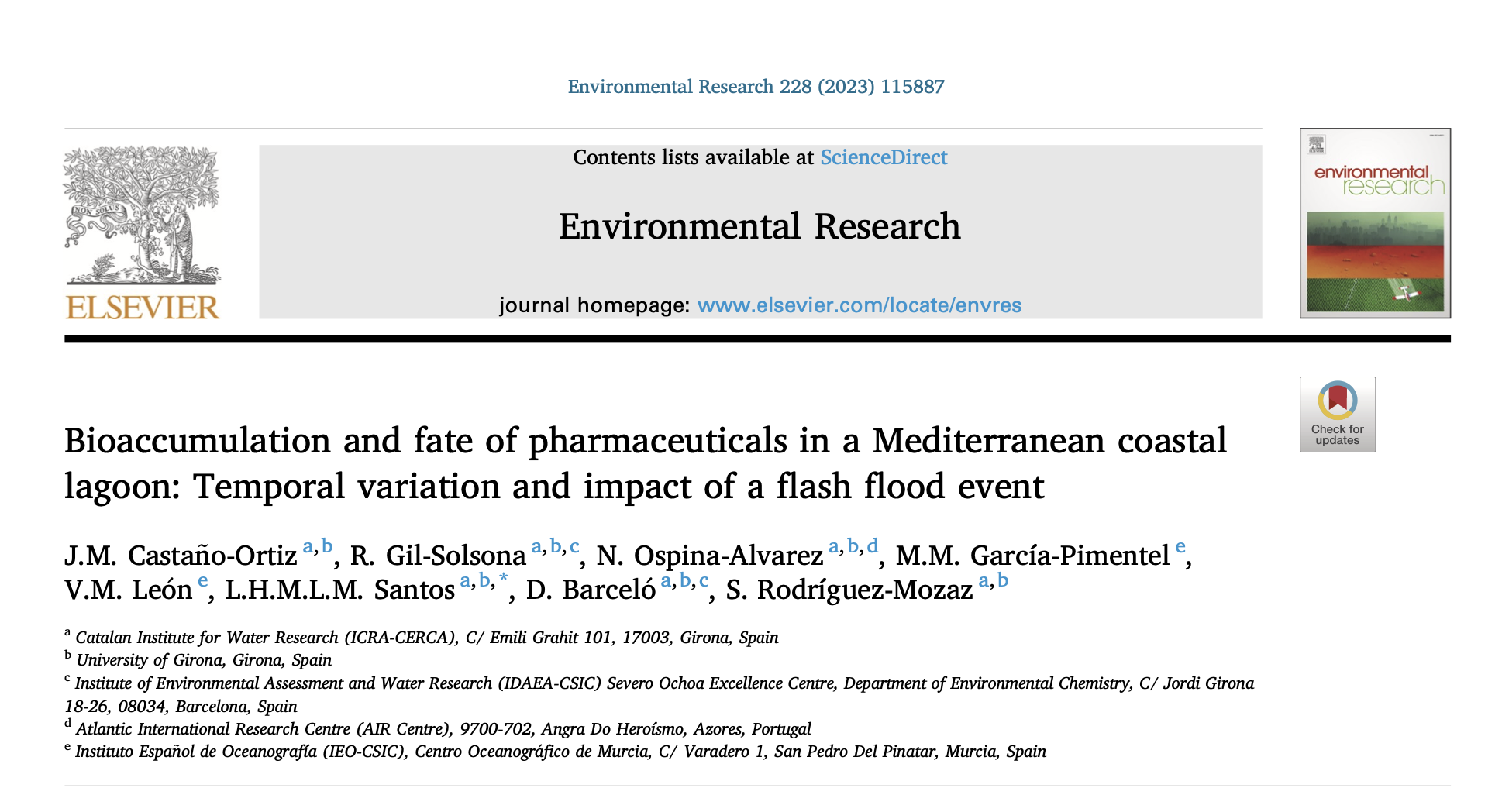The distribution and bioaccumulation of pharmaceuticals have been characterized in seawater, sediment and biota from the Mar Menor lagoon and recently published in Environmental Research.
Coastal ecosystems are particularly vulnerable to terrestrial inputs from human-impacted areas. In a recent study published in the scientific journal “Environmental Research” the seasonal occurrence of pharmaceuticals in Mar Menor lagoon (SE Spain) was studied,
thanks to the collaboration between PHARMASEA and PLAS-MED projects. The results were
compared to previous ones obtained before wastewater management improvement was implemented in the area. Seven compounds were found at low concentrations in seawater and only carbamazepine was found in sediments, suggesting an improved environmental quality after the cease of permanent discharges of treated wastewater to the lagoon. However, analgesic/anti-inflammatory drugs, lipid regulators, psychiatric drugs, and β-blocking agents were found in fish and mollusks at similar levels than the previous situation. Additionally this study evidenced that the flash flood event from 2019 increased the prevalence of PhACs in the lagoon, especially in the upper water layer.
Reference:
Castaño-Ortiz, J.M., Gil-Solsona, R., Ospina-Alvarez, N., García-Pimentel, M.M., León, V.M., Santos, L.H.M.L.M., Barceló, D., Rodríguez-Mozaz, S. 2023. Bioaccumulation and fate of pharmaceuticals in a Mediterranean coastal lagoon: Temporal variation and impact of a flash flood event, Environmental Research 228, 115887. https://doi.org/10.1016/j.envres.2023.115887






